My pursuit to master typing began seven months ago, with no prior experience. Starting off as a novice, I gradually progressed from a typing speed of 10 words per minute to my current speed of 71 words per minute. In this post, I will be sharing my journey and the methods I used to learn to type proficiently using all 10 fingers.
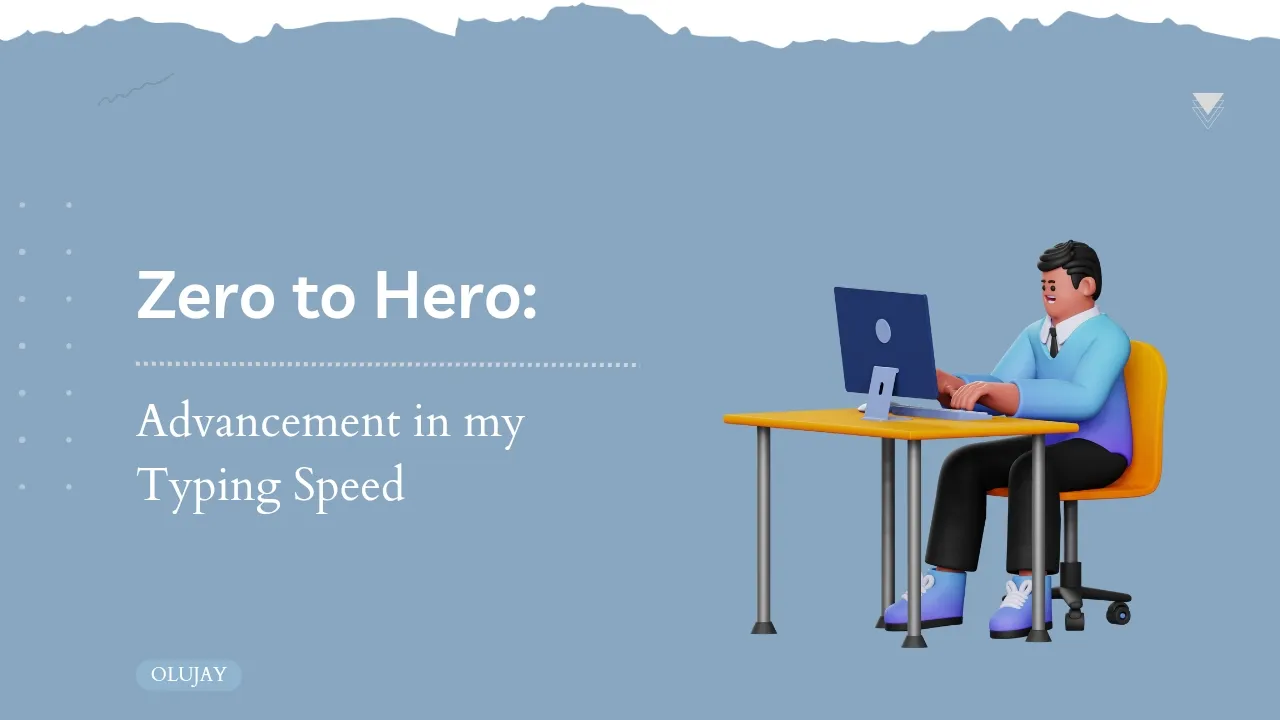
I have had PCs for years, but never did I think of actually learning to type, and this is because my smartphone(s) could handle just about everything I needed. Much of what I often did with my gadgets never required being a dexterous typist, so I never bothered to learn. However, the narrative began to change when life and its contingencies happened, and I realized the pertinent need to learn touch typing.
Touch typing is basically a method of typing where one uses all of their fingers to type on a keyboard without having to look at the keys. It allows for faster and more accurate typing as opposed to the hunt-and-peck method. Apparently, there are several methods of typing.

How it all started
I may not have considered the idea of typing if it had not been for some of my friends. @starstrings01 is excellent at it, and so is another friend of mine who isn't on Hive. And it was just recently, in early 2022, that I realized this. I was always amazed at the way they were just able to type without looking at their keys, and even doing so very rapidly—both of them are in the 80 WPM (words-per-minute) range—but I still didn't care enough to learn at that time, not until my other friend put up a challenge (an infuriating one).
"It will take you donkey years to learn to type fast." is what my friend said to me when I showed just a tad bit of interest in learning. I was infuriated by this statement because I felt underestimated and that he was flattering himself. I don't like to be underestimated. So right there and then, my number one ambition in life was to prove him wrong. This was around June.
Making the move
I went on to install the famous Mavis Beacon on my computer to begin this quest to "prove someone wrong." And with my few tests, for Mavis to determine my "level," I couldn't go above the 10 WPM mark. Eventually, the software I had got glitchy, and I couldn't get a better one, so I opted for web applications to learn from, hoping they'd suffice.
The first one I found was typing.com. I had already gotten the hang of the finger placements after a month of using Mavis Beacon, so I just continued learning with what I knew. And steadily, I grew to 30 WPM.
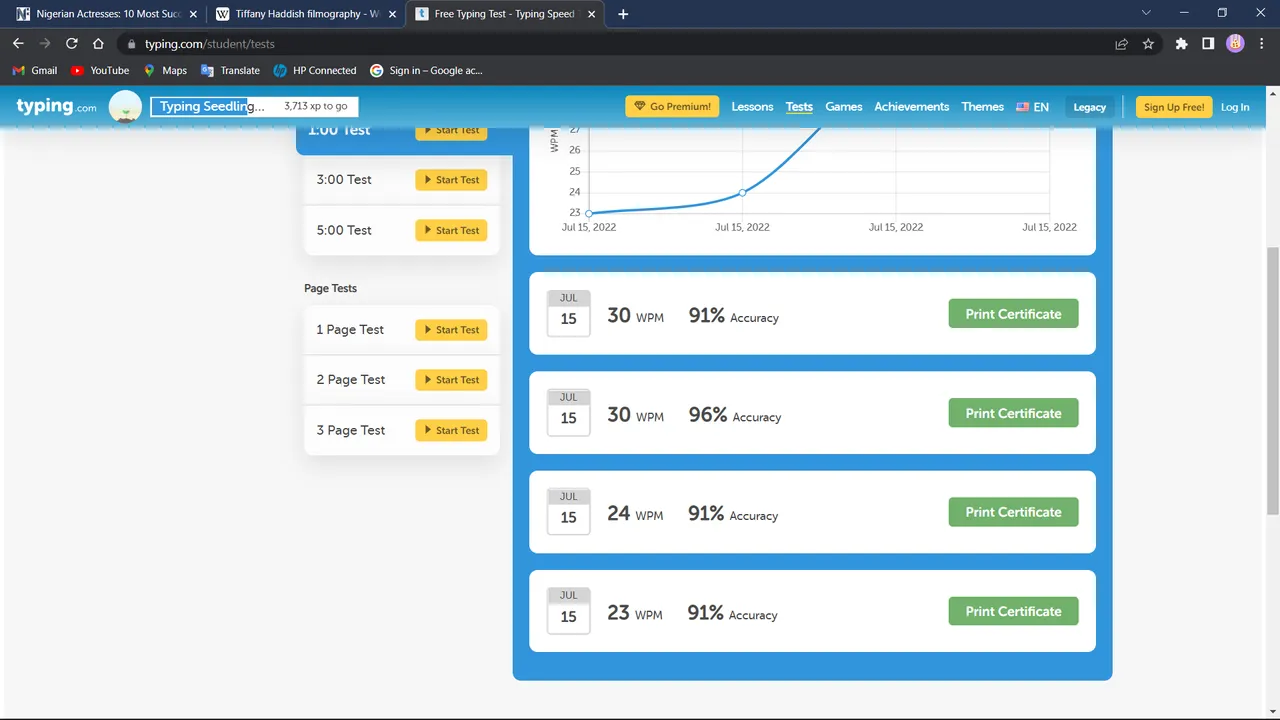
But at this time, my learning pace was really slow because I had the wrong type of motivation—to prove someone wrong. So I struggled to be consistent, moreso because it was really challenging to keep learning as I didn't find it easy most times. But then, life and its contingencies happened, and then my mobile phone went bad.
I had to rely heavily on my PC to do many things, particularly Hive. So I had a new source of motivation. Consider how difficult and time-consuming it would have been to create posts.I just had to learn. So I picked it up again.
I figured many of the web apps I found had different ways they measured typing speed; some looked better than others, and some were easier than others, so I decided to just shuffle between the ones I liked. I then stuck with just 3.

The routine
I never planned to design a routine to follow, but I made sure to always show up every day to practice at least once a day, say for 2 or 5 minutes. That way, I knew I was learning every day, even if some days were rough.
I would make sure I practiced for about 5 minutes in the morning, whenever I could, and that would be about 5 rounds. One round (or test, actually) is 60 seconds. I would have random words thrown at me, and I would just type them as they came.
At first, I was after speed—getting faster than before—but I just couldn't pass that 30 WPM range. It then began to dawn on me that I was chasing the wrong thing. I should have been thinking about higher accuracy and spending more time being comfortable. It is only when I am truly comfortable with a speed that I can push higher.
I then started to spend more time on each round. So I would start with livechat.com and do two rounds of sixty seconds, then move on to 10fastfingers.com, and do another set of two rounds of sixty seconds, and then spend the most time at typingtest.com, my favorite.
Unlike the other two, where I couldn't type uppercase letters, special characters, or numbers, [typingtest.com] (https://www.typingtest.com/) brought everything to the table, increasing the difficulty and allowing me to learn more and work my fingers even more.
typingtest.com There were numerous ways to practice: different modes, time control, and even keeping track of my "weak keys." X, Z, and B were often my weak keys.
The growth
There were days that I would spend about an hour practicing because I had a lot of free time at that time. And so I would sit, feeling engrossed in it, and just keep going.
I continued that for a long time, and steadily I started seeing progress. I then entered the 40 WPM range by the end of July.
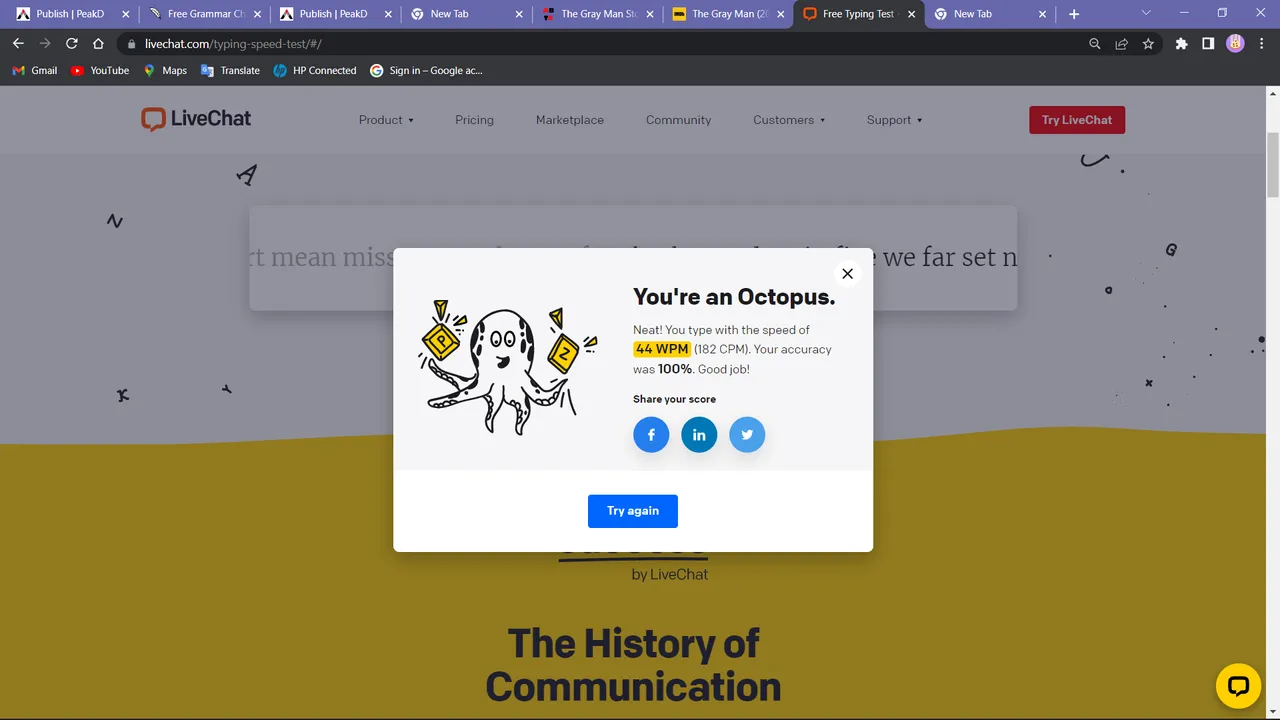 | 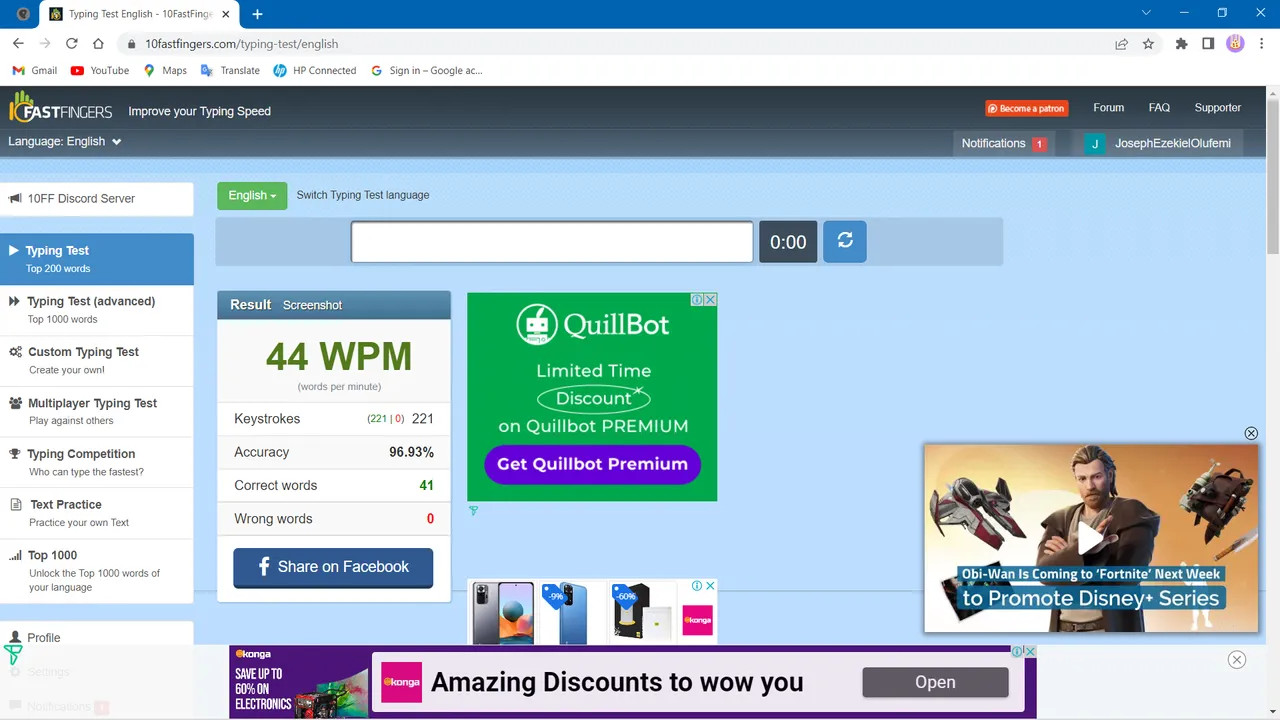 |
I was excited when I reached the 40 WPM typing speed because I had already been focusing more on getting more accuracy. My accuracy never really went below 96%. I always tried to nail a 100% score most of the time, no matter how slow I felt, and, in the long run, it paid off because I had been building memory muscle.
I didn't stop there; I continued in the 40 WPM range. I wanted more, so I didn't relent. And I kept up the same routine of practicing whenever I had the opportunity and for as long as I could. And again, by the end of the month of August, I had already started hitting the 50 WPM speed.
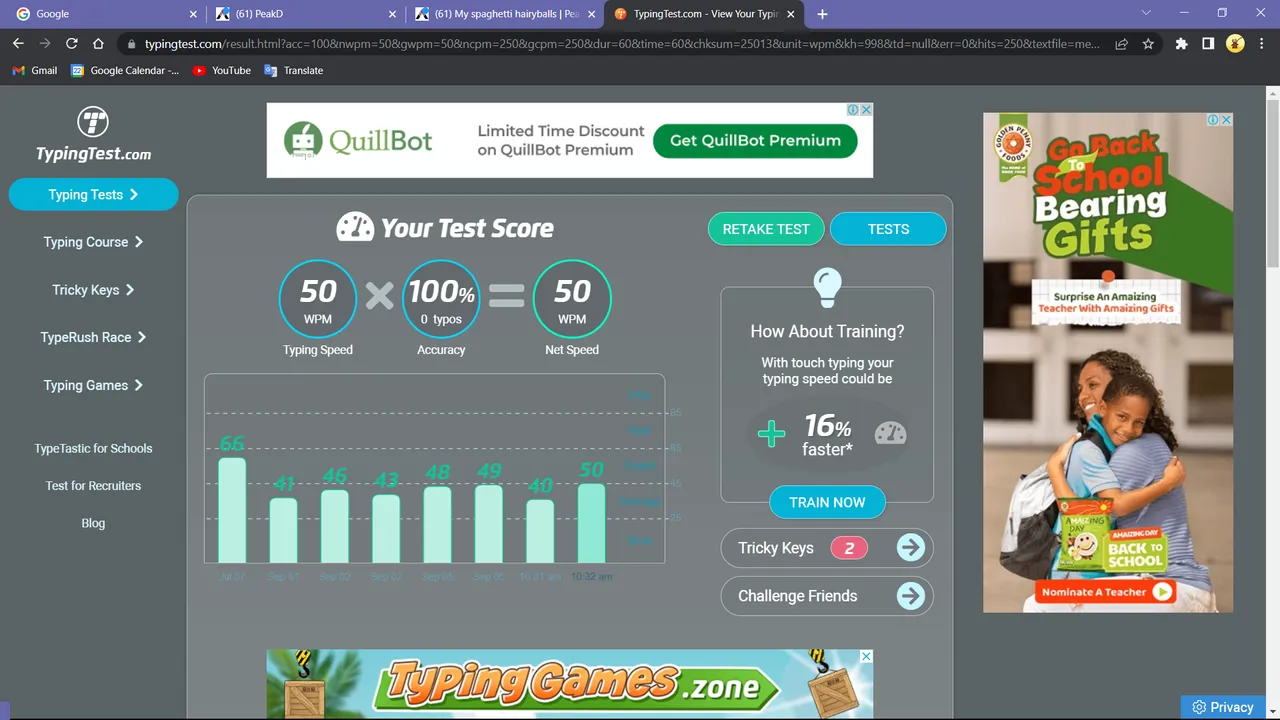 | 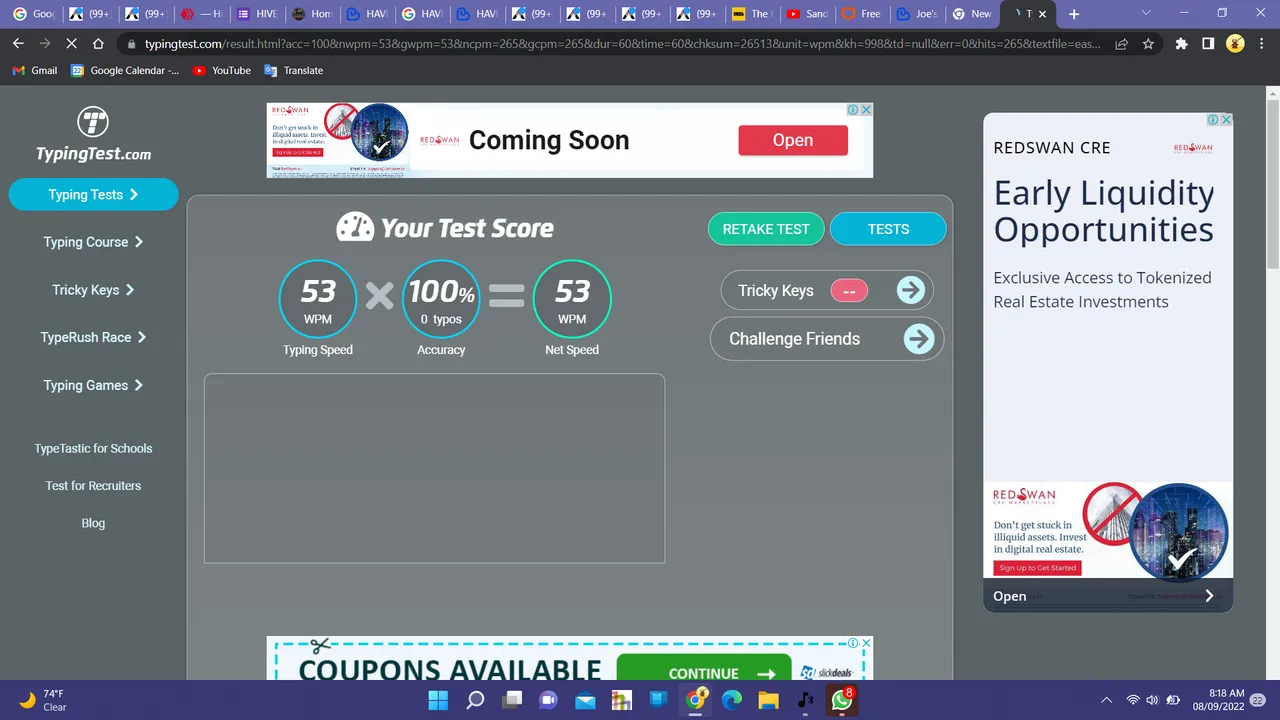 |
As I previously stated, some of these web applications were more difficult than others. typingtest.com seemed to be the most challenging for me because it had everything coming at me. It even had numbers coming at me a lot more than other ones. And typing numbers was very difficult to get accustomed to.
My rate of increase in speed started to decrease little by little as I was getting faster. Getting faster started getting a little harder to do, and this was because when I do get much faster, my brain needs to get accustomed to that speed, and so I spent more time getting to the 60 WPM range. It wasn't until November that I got my new ALT of 66 WPM.

This is 10fastfingers.com. And this one did not bring numbers or special characters. Uppercase was only used on rare occasions.That made it much easier to hit higher scores.
When November then came, I had stopped practicing like I used to, and so I just stayed around 60 WPM every time I practiced. And then, in December, my practice had drastically dropped.
However, in January, I started practicing again, though not as much as I had when I started. Basically, blogging and commenting every now and then helped manage my speed.
Then it happened that after taking practice a little more seriously, I hit my new ALT of 71 WPM. I wasn't so shocked when I saw that score, as I did feel the speed in my hands, but I was really excited to see that I had finally gotten to the 70 WPM range, and that meant a lot of things for me.
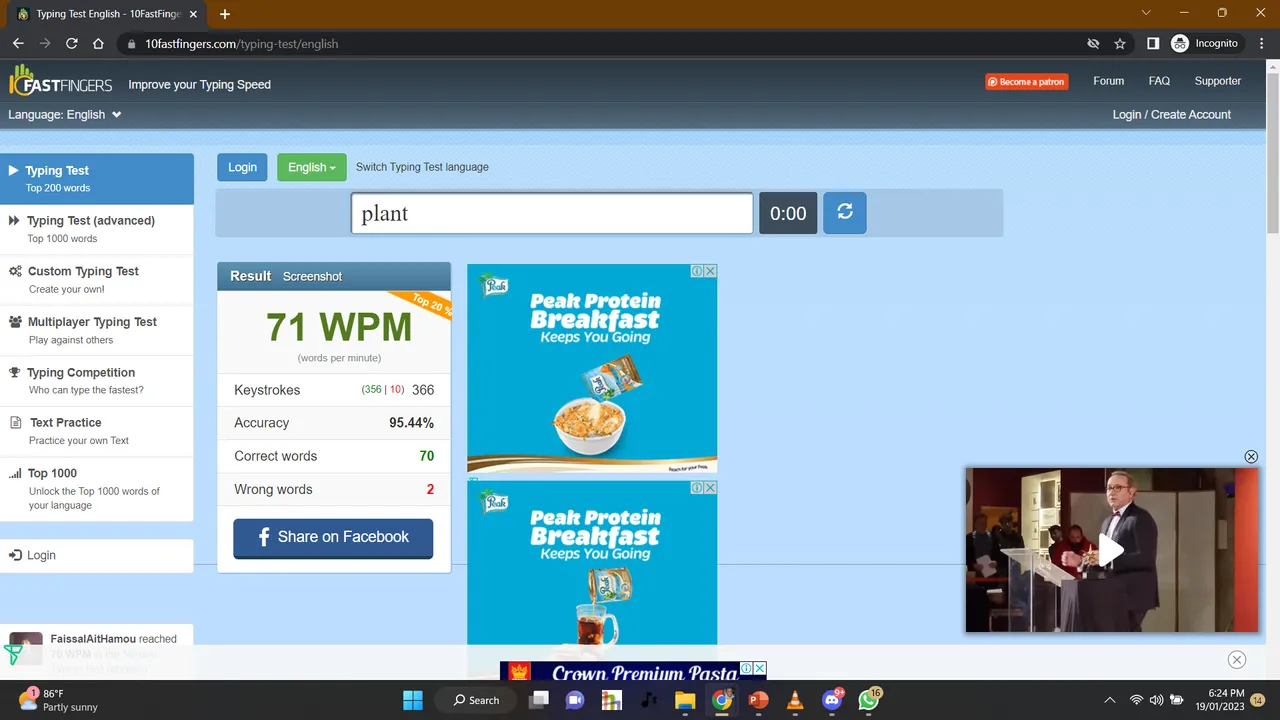

One of the many amazing things that happened for me in 2022 was joining Hive, as it gave me that environment to apply all that I had learned in all my practices.
At the end of the day, I proved my friend wrong as I got to his typing speed in seven months, not donkey years. And now, I look forward to hitting the 80 WPM mark and joining my brother, @starstrings01. He even shared a post about when he hit 87 WPM about a month ago. But it will not come without more practice and consistency. Let's see how it goes in a couple of months from now.

ℍ𝕖𝕪, 𝕚𝕗 𝕪𝕠𝕦 𝕖𝕟𝕛𝕠𝕪𝕖𝕕 𝕥𝕙𝕚𝕤 𝕡𝕠𝕤𝕥, 𝕜𝕚𝕟𝕕𝕝𝕪 𝕝𝕖𝕒𝕧𝕖 𝕒 𝕔𝕠𝕞𝕞𝕖𝕟𝕥, 𝕣𝕖𝕓𝕝𝕠𝕘, 𝕠𝕣 𝕦𝕡𝕧𝕠𝕥𝕖. 𝕀𝕥'𝕝𝕝 𝕤𝕦𝕣𝕖 𝕓𝕖 𝕒𝕡𝕡𝕣𝕖𝕔𝕚𝕒𝕥𝕖𝕕.
